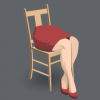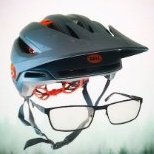Search the Community
Showing results for 'select by colour' in content posted in Feedback for Affinity Designer V1 on Desktop.
-

Include Variable Fonts
Sascha Leib replied to Friksel's topic in Feedback for Affinity Designer V1 on Desktop
Just to give my +1 to this topic: I have just encountered the problem specifically with Bahnschrift (which is a Windows standard font, by the way!) that was chosen for a project, and I can easily use that in multiple applications, including MS Office, Paint.Net, Inkscape, etc. But I can not use it in Affinity Designer 2, because whatever I chose from the font menu, I always only get the standard cut, and can't select any of the other variants. Now, I understand that this font has certain features that are not supported in Affinity – like that you can adjust parameters like weight very flexibly, ideally with a slider control. That's a great "nice to have", but in most cases, a more simplified approach would already be a big step forward to the situation that we have now. I see that Designer seems to recognize that there are multiple default variations available from the fonts list - and it shows them, but without the proper name, and selecting any of these always sets only the default font variant. In other words: it is completely broken and not usable in the way it is now. To me it seems as if Serif is not implementing a simple solution because they hope to deliver a perfect one at some point in the future - but this is not moving forward since many years, so maybe a simple, imperfect solution that could be rolled out in a reasonable time would probably be a better one. As for me, I am now using Inkscape to insert this font into drawings, and then I convert all text to paths. And that is not actually a good workflow 😞 Edit: Sorry, I just noticed that this is the v1 forum, and there is already a new discussion on this topic in the v2 forum. Apparently I can't delete my post, so I just leave this here... -

Mixbox colour mixing is very realistic
TJack replied to moi.cool's topic in Feedback for Affinity Designer V1 on Desktop
Hello, I came across this video when researching digital colour mixing. Im not sure if Affinity has implemented this kind of tech in their apps. Anyway it lead me to this feed so I thought I would throw my hat into the ring and express my interest in this . Was interesting none the less. -

Vector brush names
Hangman replied to Alex A.'s topic in Feedback for Affinity Designer V1 on Desktop
Hi @iorbita and welcome to the forums, Select 'Show Brush Names' in the Brush Panel context menu... -
Auto-Align Layers by content
Jose P replied to Darius M's topic in Feedback for Affinity Designer V1 on Desktop
Hi there, trying to resurrect this post. I Also would like this, I think a quick feature of autoallign the alredy open layers without the need to open the stacking engine and search for the files would be a improvement. I think I saw more people talking about this. I work with real state photos a lot and my workflow will be a lot easier and faster with this, I usually process arround 150 or 300 pictures per day so every second counts. I usualy do this: Work on Capture One the raws -> Send the pictures (if needed, for example with a flambient) to Affinity Photo on TIFF. This creates a bunch of tabs, one per image sended to Affinity -> Open Stack and add the files (First I search for them on Finder or directly paste the files route, once this is done Affinity remembers the last route used and this step is not alredy needed on this job) -> select the files I want to allign and open them -> select Rotate and escalate option and apply (the memory of the tool would be awsome in here too so select this every single time not will be needed) -> The stacking engine creates a new tab with the layers alligned in a group, I select and copy the layers needed and paste them in the tab of one of the original TIFFs -> Delete the original TIFF layer (Usually the bottom one) and the editing work begins. Once this is done I save everithing over the original TIFF (Most of the times with the layers just in case I need to reopen this photo) so I can open the TIFF in Capture One like it was the original image. So yeah. I think allign the open layers with a button would be nice. Or maybe even a "open as layers on Affinity Photo" plugin for Capture One, but this is another discussion. Thanks and I very sorry for my poor translation. -

Manage Preflight highlight color for errors
MikeTO replied to Loquos's topic in Feedback for Affinity Designer V1 on Desktop
I agree, it often takes a long time to find some of these due to the highlight colour. An annoying shade cyan or yellow would be more useful. But you'd be better off asking in the v2 suggestions forum to get attention on this issue: https://forum.affinity.serif.com/index.php?/forum/122-feedback-for-the-affinity-v2-suite-of-products/- 3 replies
-
- straight quotes
- missing character
-
(and 2 more)
Tagged with:
-
I totally agree and do not understand Affinity's resistance to this. I have read in the past that they are attached to the idea of non-destructive editing as part of the reason for this decision. I have just tried a laborious workaraound....use the vector brush to make shape and convert to outlines. Join all component outlined objects using the 'add' command to make one object. Then, to subtract (like the illustrator eraser tool) draw over the object in a different colour, convert to outlines, then subtract. This works. It's a total pain but it works. It is also DESTRUCTIVE. But I don't want to keep all my trimmings. It feels like the program designers wan to keep all of their hair trimmings when they go to the hairdressers! For goodness sake, this is such a basic way to efficiently produce vector drawings, especially if you are using pressure pens, and IMO, it's an absolute must have. This is supposed to be a professional app, but I must say, I'm very disappointed at this basic omission. Pretty please????
-
For what it's worth… I just got another "like" for my old post, alas it is no more true: On Ventura, although you can select Microsoft Icon from the Save As menu, saving will fail with the "The document “…” could not be exported" message. "Thank you", Apple, for crippling Preview with every new OS upgrade! In theory, the free XnViewMP should be capable of saving images as *.ico but in my tests right now it crashes every time. So from my app collection, it's now upon GraphicConverter (not free).
-
Thankfully, in Affinity Designer 2, a keyboard shortcut for Collapse All in Layers Panel can be user-assigned. Open Edit:Settings...:Shortcuts, select Designer and Layer in the dropdown menus, and then scroll down to find the Collapse All command. (I chose Ctrl-< as the keyboard shortcut for Collapse All.) Screenshot attached.
- 77 replies
-
- layers
- collapse all
-
(and 1 more)
Tagged with:
-

Mixbox colour mixing is very realistic
ChungCK replied to moi.cool's topic in Feedback for Affinity Designer V1 on Desktop
That’s amazing! I would really like to have support for this colour system in future. Affinity, please! -
View objects outside artboard.
Wonky Dom replied to celionicoli's topic in Feedback for Affinity Designer V1 on Desktop
There is another option... use the Layers Palette to locate and select, then drag "it" on to your canvas (you could even increase the Thumbnail size for a more trustworthy viewing) So panic not, ye fluffy peeplees, your imported thing-a-me has (most likely) not disappeared, its just taking a rest from you staring at it all the time! : ) WD -
Spot colours / .eps
Like, would like more if… replied to JamesA's topic in Feedback for Affinity Designer V1 on Desktop
Can't believe I've only just found this out having imported background artwork and a cutter guide – no spot colour so no cutter guide – using in InDesign because of inaccurate Hindi font recognition/rendering in Publisher. Bit of a double whammy. Dissappinting, surprising how you just expect things to be there when you've used apps for this purpose for years. -
What Brian_J said, Right-click on a layer and select "Collapse All Parents" towards the bottom of the menu.
- 77 replies
-
- layers
- collapse all
-
(and 1 more)
Tagged with:
-
I use assets with multiple layers that I use with multiple art boards, . I was approaching this problem the same way by trying to hide the color tagged layers and as stated, hide on one Art Board hide on them all. One of my art boards I use as a scratch sheet I just select and "harvest" the tagged objects I need and paste then to the other art boards. So select the color tagged objects you want to use and copy and paste on to the art individual art boards rather than hide them.
-

Auto Select Layer
KaitosArt replied to createsean's topic in Feedback for Affinity Designer V1 on Desktop
Hi there @MEB Thanks for the reply! But actually, I was looking for an option to draw in Affinity Design with the tool PEN TOOL and make it not select the line I've draw with the Node Tool. I just want to feel like I'm drawing with a pen, without the program to auto select the line I've just made. Because this breaks the work flow so hard and make it a problem to understand how the line I've drew looks like. -
Exporting multiple artboards
3rdDay replied to Adrian M's topic in Feedback for Affinity Designer V1 on Desktop
SOLUTION: I had a similar problem and came across something that worked for me. Move the artboards (while in the Designer Persona) so that they are perfectly aligned with one another (touching) – with 'snapping' on, of course, so that they are PERFECTLY aligned. Then head back to the Export Persona and delete any slices (under the 'Slices' tab to the right) that exist. Press 'Layers' (to the left of the 'Slices' tab) and select all of them and then click 'Create Slides' (below). Then head back to the 'Slides' and ensure they are all the correct size and export. I hope you find this works or another solution! -
Hi @KaitosArt, Welcome to Affinity Forums Please check the Auto-select options available to set the desired Auto-select behaviour in Affinity Photo (Move Tool, Auto Select dropdown in the context toolbar). You can find a description of all the options and how they work here (on the beginning of the Settings section, on top).
-

Auto Select Layer
KaitosArt replied to createsean's topic in Feedback for Affinity Designer V1 on Desktop
Hi guys! Any update about this auto select problem? -
Default Export Selection
JamesH replied to 297Chrisc's topic in Feedback for Affinity Designer V1 on Desktop
+1 to this. I dislike having to select the area every export....









